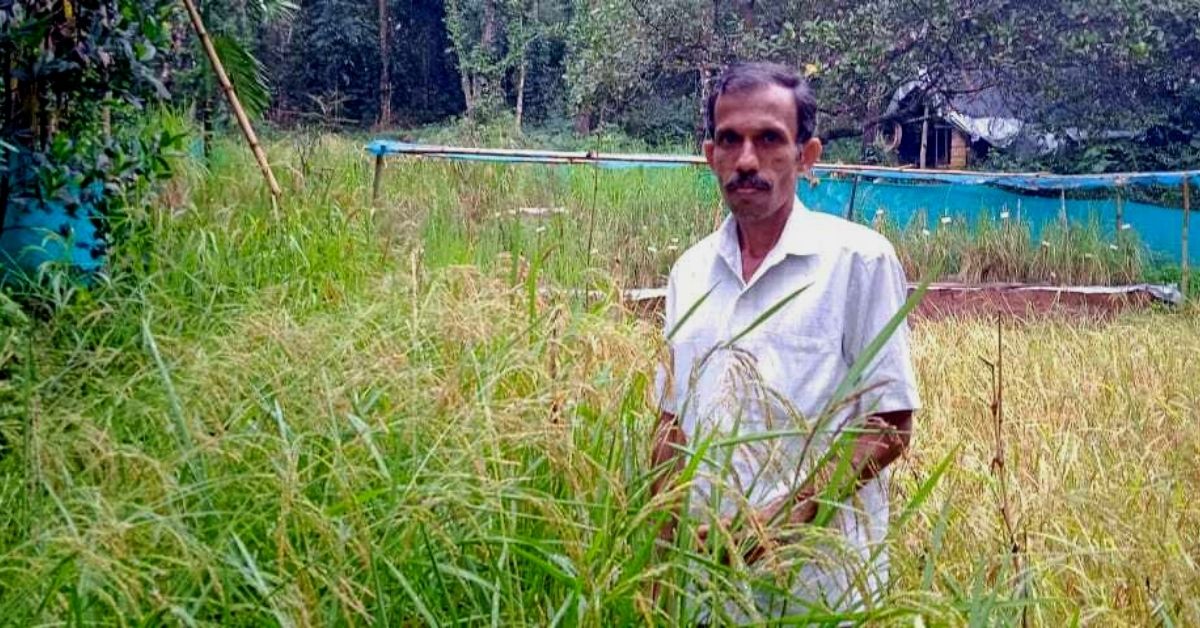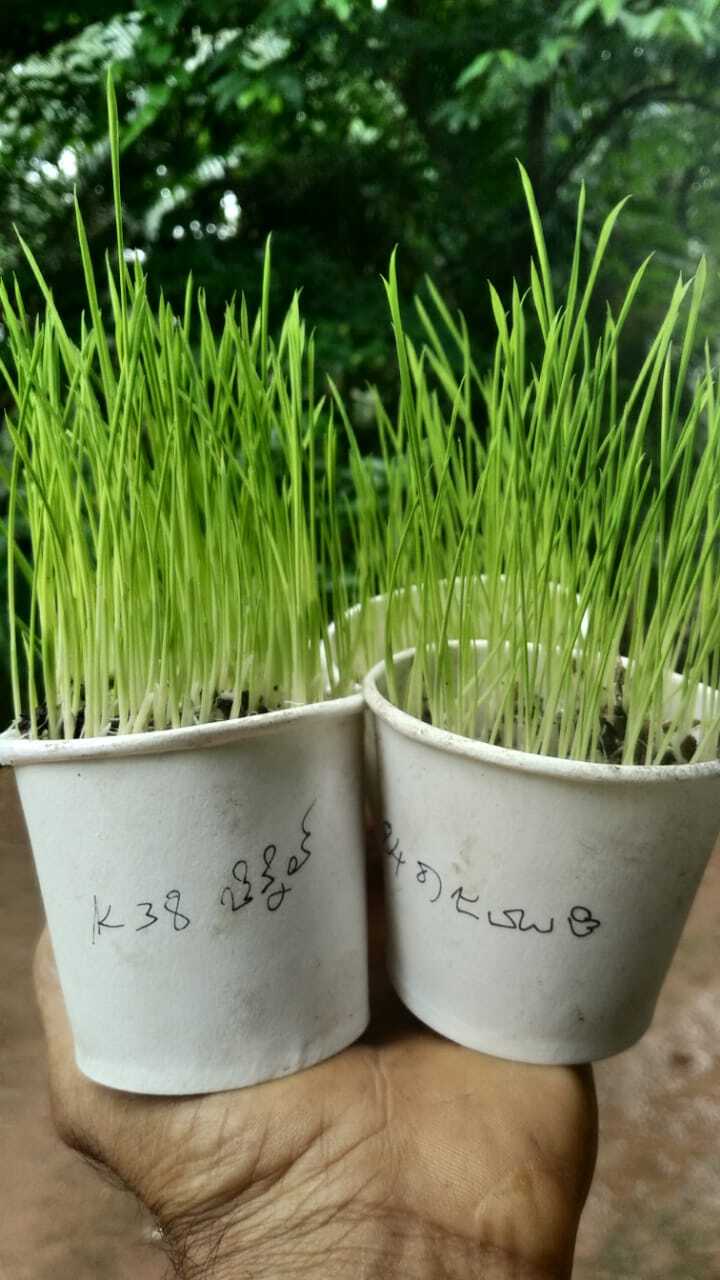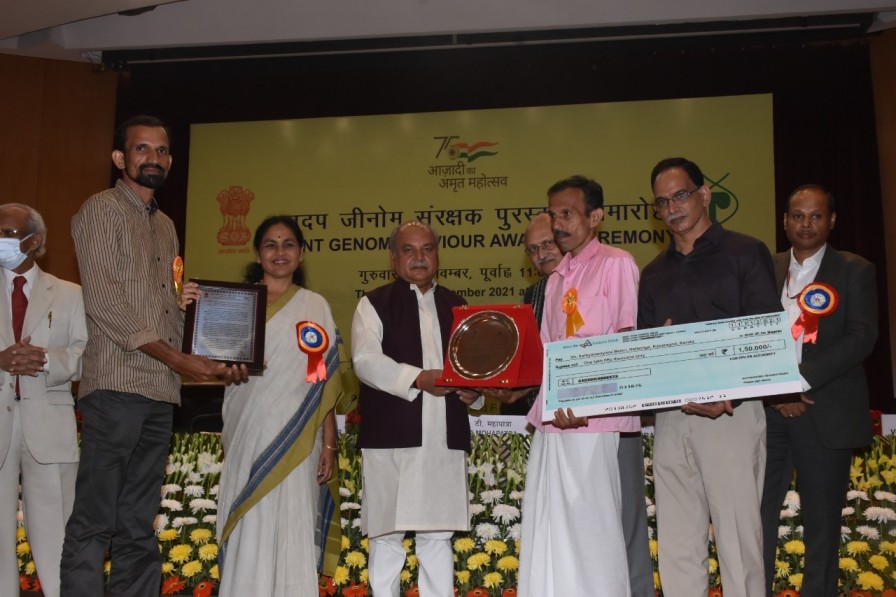Kerala Farmer Sources Seeds From India & Japan to Grow 650 Varieties of Paddy
Sathyanarayana Beleri from Kasaragod, Kerala, grows and conserves 650 varieties of paddy in his 25 cents of land. He was recently honoured by the Union Ministry of Agriculture with the ‘Plant Genome Saviour Farmer Reward’ for his efforts.

Sathyanarayana Beleri, of Nettinege village in Kasaragod, grew up watching beautiful paddy fields that flourished in his village. He was very fond of the crop, its fields and the pathways around them where the reapers gathered the paddy bundles after harvesting.
Unfortunately, his family never owned a paddy field.
Now, at the age of 48, Sathyanarayana owns a paddy field with more than 650 varieties of rice from different parts of the world. His four acres of land was not suitable for paddy cultivation due to geographical reasons, but this didn’t disappoint Sathyanarayana.
He artificially created a paddy field in his 25 cents of land by using tarpaulin and grow bags. He grows the rice varieties mostly in grow bags by storing water in the tarpaulin. A few varieties are also cultivated directly on the land.
“I am not cultivating paddy for profit but for the love of it”

“I am not cultivating paddy for profit but for the love of it and also for conserving a wide range of its varieties that exist in different parts of our country or even outside. Students and researchers visit my field very often to see these rare varieties of rice,” says Sathyanarayana.
The wide range of paddy varieties in Sathyanarayana’s collection includes rice from different states, including Kerala, Karnataka, Assam and Manipur. There are even rice varieties from outside India like the Philippines and Japan. The collection also includes paddy varieties like Kagga that grows on saline soil, Vellathovan that grows in water-scarce land and even varieties with many medicinal benefits like Ambemohar, Karigajavali, etc. Rice varieties in different colours like white, black, red, purple and green also grow on his field.
Sathyanarayana says, “When I receive the seeds I sow them in soil-filled paper cups and let them germinate. After they germinate, I replant them into the grow bags mixed with soil and cow dung powder. Then I place the grow bags in the tarpaulin filled with water. I do this method since it’s not a land suitable for paddy cultivation, which requires water all the time. This method helps to store the water which retains the right amount of moisture required for the grow bags. It also helps in reducing rat menace.”

All paddy varieties on Sathyanarayana’s field are labelled. When the paddy flowers, he keeps the grow bags at a distance from each other in order to avoid cross-pollination. He harvests around 300 grams of seeds from each grow bag. He also gives out the seeds of his rice varieties for free to people who need them. The Kerala Agricultural University and the University of Agricultural and Horticultural Sciences in Shivamogga have used paddy varieties from his collection for breeding programmes.
Collecting rice varieties for almost 15 years

Sathyanarayana started collecting rice varieties almost 15 years ago when he learnt about an organic farmer in Udupi who was giving away seeds of Rajakayame rice variety.
It was the first rice variety that he grew on his land and thereafter he kept adding more varieties every year. He has even travelled to different states in search of paddy varieties.
“There are friends and relatives of mine who send me paddy seeds from different places. I have obtained seeds from the Kerala Agricultural University as well. I also receive seeds from many agricultural scientists and researchers across the country,” adds Sathyanarayana
Recently, Sathyanarayana was honoured by the Union Ministry of Agriculture for his efforts in conserving rare and historic rice varieties. Union Agriculture Minister Narendra Singh Tomar presented him with the ‘Plant Genome Saviour Farmer Reward’ in Delhi on November 11. He was nominated by the Kerala Agricultural University.
“I am happy to receive this honour and it is a token of encouragement for farmers like me. I want to dedicate this honour to all the rice farmers in Kasaragod,” Sathyanarayana says.
Besides the paddy cultivation, Sathyanarayana grows rubber, nutmeg and areca nut on his remaining land. He has also started collecting different varieties of jackfruit trees, mango trees and pepper from different places.
(Edited by Yoshita Rao)
If you found our stories insightful, informative, or even just enjoyable, we invite you to consider making a voluntary payment to support the work we do at The Better India. Your contribution helps us continue producing quality content that educates, inspires, and drives positive change.
Choose one of the payment options below for your contribution-
By paying for the stories you value, you directly contribute to sustaining our efforts focused on making a difference in the world. Together, let’s ensure that impactful stories continue to be told and shared, enriching lives and communities alike.
Thank you for your support. Here are some frequently asked questions you might find helpful to know why you are contributing?


This story made me
-
97
-
121
-
89
-
167











